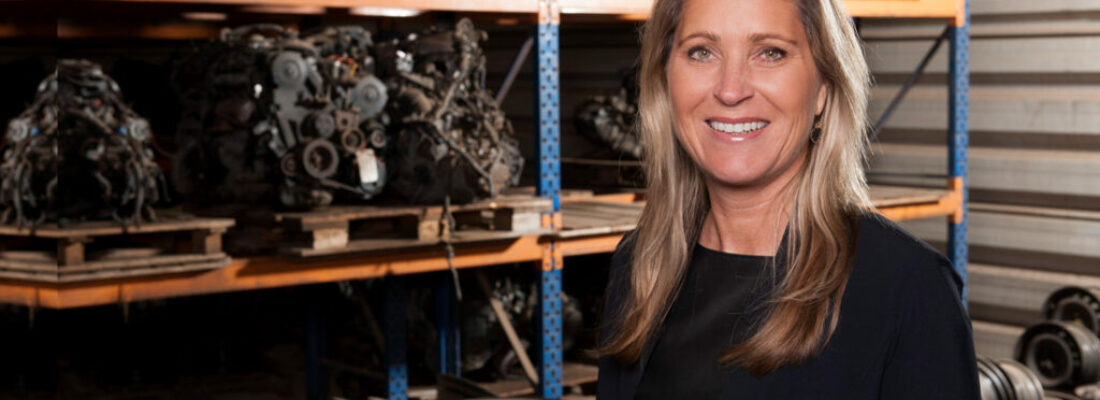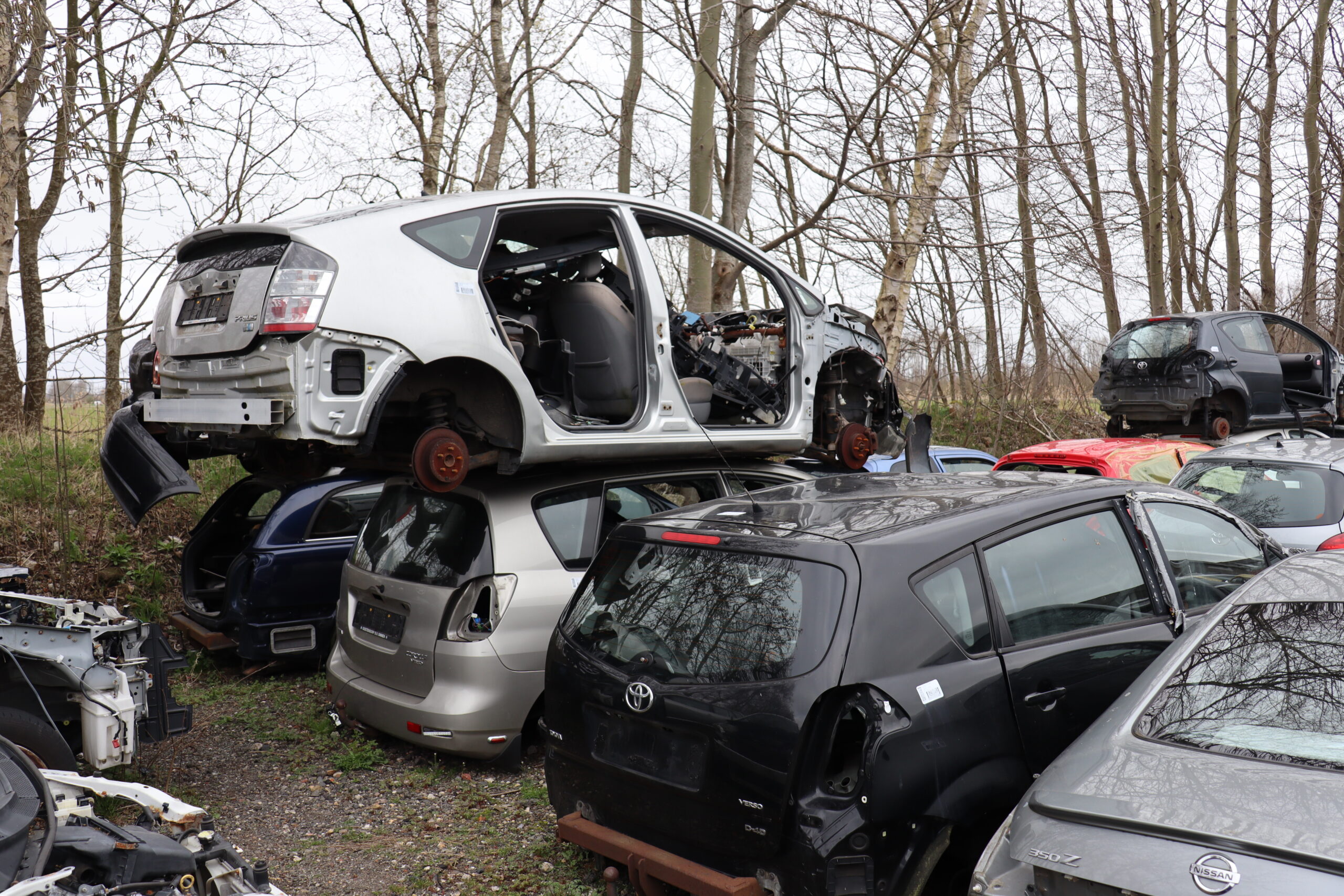A car recycling percentage of 98.7 percent is a dream for the newly appointed managing director of ARN. But Ingrid Niessing, who has a formidable track record in Dutch and international business in the accountancy and financial world, is not prone to dreaming. She thinks primarily in terms of ‘next steps’. The goal for the coming year, as she explains in this blog, is to raise the quality of the output of recyclable raw materials.
Tekst Peter van Kessel
“At ARN, we recently fine-tuned our vision and mission. In a nutshell, our purpose and focus is car recycling.”
During the recent ARN Relation Day held on the island of Pampus, I took a good look at the audience at one point. As during past company visits, I saw first and foremost hard workers, genuine entrepreneurs in recycling, who are proud of what they do and curious about how recycling can – and will – have to be done differently and better in the future.
Let’s get one thing straight: the high recycling percentage of 98.7 of car weight is definitely positive. That is something we can be proud of, both at ARN and in the sector, but we haven’t reached the finishing line just yet. We are now entering the next phase and are ready to press ahead. The reason is not only because there’s always room for improvement, but also because car recycling will only become more challenging in coming years.
Our shareholders and other companies in the automotive sector expect us to do what is necessary to continue achieving the 95 percentile in the future. Of course, this will have to be done while taking into consideration the critical scrutiny of the government and consumers. That is not a problem at this time, but it does not go without saying that we will perform equally as well year every year. The further roll-out of electric cars, for instance, is an increasingly greater challenge since, after all, these require a different type of recycling. We will also need to find a solution to the use of new materials, such as the ‘self-undenting’ materials from the world of nanotechnology discussed during the ARN Relation Day.
To determine how to meet all the challenges that the future will bring, we need to know the direction in which we are heading. At ARN, we recently fine-tuned our vision and mission. In a nutshell, our purpose and focus is car recycling. And without too many other distractions, since we want to remain experts.
So what is our goal? I think we need to admit that 100 percent recycling is more or less unrealistic in both the short and medium term. But just to make things clear: that is not our goal either! We will continue to aim for a minimum of 95% recycling, although we also prioritise generating a profit through a more positive and cost-effective CO2 footprint. That is progress that actually benefits society. There is a perfect balance that can be achieved between the recycling percentage, CO2 footprint and euros. The last two factors in particular will be the focus of our attention in coming years.
Once again, we need to accept the fact that material recycling and processing in itself is not the end all, be all. But what kinds of CO2 sacrifices and prices are relevant for processing these materials? And can we increase the quality of that processing, so that the materials processed by the industry can be reused as new raw materials? These are questions that need to be answered both today and tomorrow.
That increase in the quality of recycled materials will enable us to take major steps forward in coming years. If part of the materials are processed into asphalt, for example, that’s a good thing. But if those same materials are used in the industry for new products with a high-quality application or even as new materials in cars, we will have achieved even more.
There are dozens of good examples out there. The materials recycled from cars, for instance, have been reused for some time as raw materials for piles and boards that serve as edge sloping. One of the tasks I foresee for ARN is the further development and initiation of these types of uses. We provide ideas, conduct research and develop applications in collaboration with specialised companies and technical universities. But here, too, the chain will have to play an important role together with us: at the end of the day, we are simply a catalyst.
Technology develops further and more and more opportunities to effectively recycle materials with it. Even though we know that our sector and the industry sometimes needs a little nudging to work together and develop new usages. I’m not a pessimist in this regard since, after all, the scarcer and more costly raw materials become, the more focus there will be on reclaiming raw materials. In ARN’s vision, the reuse of metals and usage of reclaimed raw materials will out-compete new raw materials more and more – in terms of both content and price. At a certain point, a manufacturer will be shooting itself in the foot if it does not use reclaimed raw materials. New raw materials will be unaffordable!
That is the active, engaged and catalytic role that ARN will be playing in the years to come. And we will be sticking our neck out when necessary to accelerate this process. For example, we currently make a case for post-shredder technology, not only as a main link, but also as a developer and processor. This initiative will eventually be assumed by the market, but if we want to accelerate the process, we will simply take up the challenge elsewhere. We invest based on a goal: to develop the flywheel for innovation in order to continue to guarantee quality car recycling.
I see yet another crucial task for ARN: to get involved earlier in the chain. We want to engage in dialogue with car manufacturers at an earlier stage in order to share knowledge and possibly make adjustments, even though we are not a major player in this chain. If they use certain materials, what consequences will this have further along in the cycle? Can things be done differently to increase the possibility to reuse and reduce residual materials? And how can we help each other out in disassembling car batteries? How can we increase opportunities for ‘second use’?
Ambitious? You bet! I would like to note, however, that the playing field must be monitored closely. The government, for example, will have to ensure strict enforcement in order to keep the sector ‘clean’. Illegal export and cowboys without any care for the environment should not be allowed to ruin things for the bona fide car dismantling companies that comply with all the rules and regulations, but are also willing to go the extra mile when it comes to recycling. The government will also have to evolve along with developments in our sector. At present, residual materials or ‘end fractions’ are still mostly considered waste. But awareness is growing of their second life as new raw materials. If we truly want a circular economy in the Netherlands, regulations and legislation must absolutely keep pace with developments.



